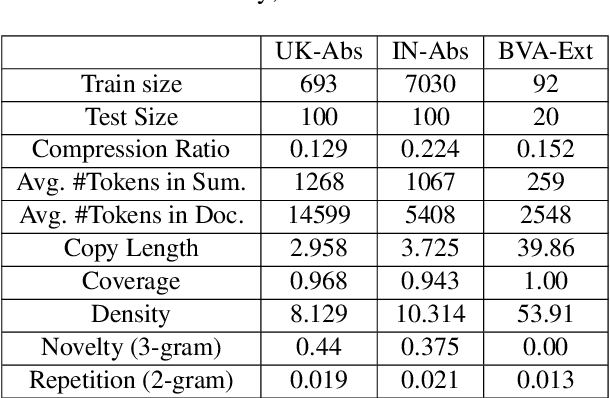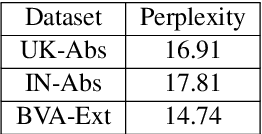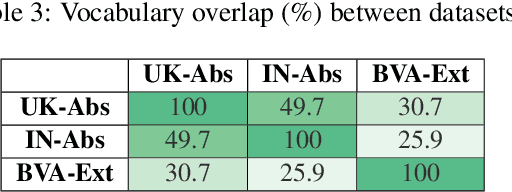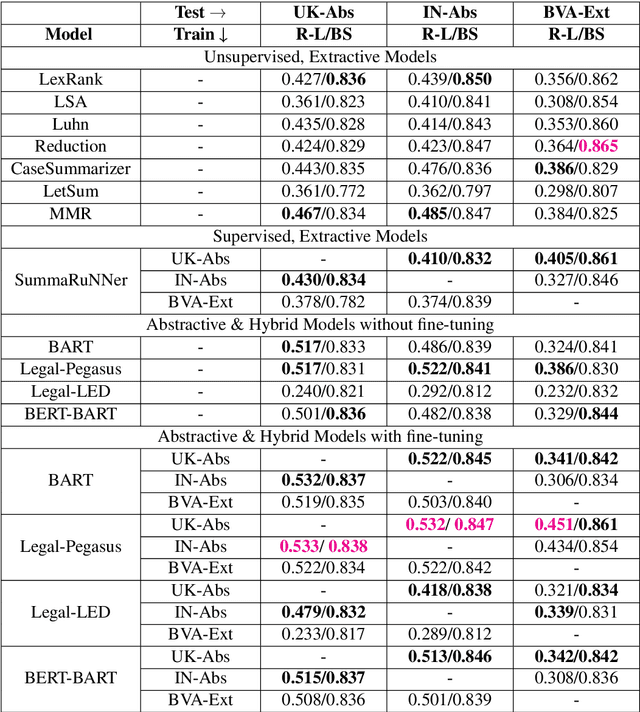Vatsal Venkatkrishna
Beyond Borders: Investigating Cross-Jurisdiction Transfer in Legal Case Summarization
Mar 28, 2024



Abstract:Legal professionals face the challenge of managing an overwhelming volume of lengthy judgments, making automated legal case summarization crucial. However, prior approaches mainly focused on training and evaluating these models within the same jurisdiction. In this study, we explore the cross-jurisdictional generalizability of legal case summarization models.Specifically, we explore how to effectively summarize legal cases of a target jurisdiction where reference summaries are not available. In particular, we investigate whether supplementing models with unlabeled target jurisdiction corpus and extractive silver summaries obtained from unsupervised algorithms on target data enhances transfer performance. Our comprehensive study on three datasets from different jurisdictions highlights the role of pre-training in improving transfer performance. We shed light on the pivotal influence of jurisdictional similarity in selecting optimal source datasets for effective transfer. Furthermore, our findings underscore that incorporating unlabeled target data yields improvements in general pre-trained models, with additional gains when silver summaries are introduced. This augmentation is especially valuable when dealing with extractive datasets and scenarios featuring limited alignment between source and target jurisdictions. Our study provides key insights for developing adaptable legal case summarization systems, transcending jurisdictional boundaries.
DocGen: Generating Detailed Parameter Docstrings in Python
Nov 17, 2023Abstract:Documentation debt hinders the effective utilization of open-source software. Although code summarization tools have been helpful for developers, most would prefer a detailed account of each parameter in a function rather than a high-level summary. However, generating such a summary is too intricate for a single generative model to produce reliably due to the lack of high-quality training data. Thus, we propose a multi-step approach that combines multiple task-specific models, each adept at producing a specific section of a docstring. The combination of these models ensures the inclusion of each section in the final docstring. We compared the results from our approach with existing generative models using both automatic metrics and a human-centred evaluation with 17 participating developers, which proves the superiority of our approach over existing methods.
 Add to Chrome
Add to Chrome Add to Firefox
Add to Firefox Add to Edge
Add to Edge